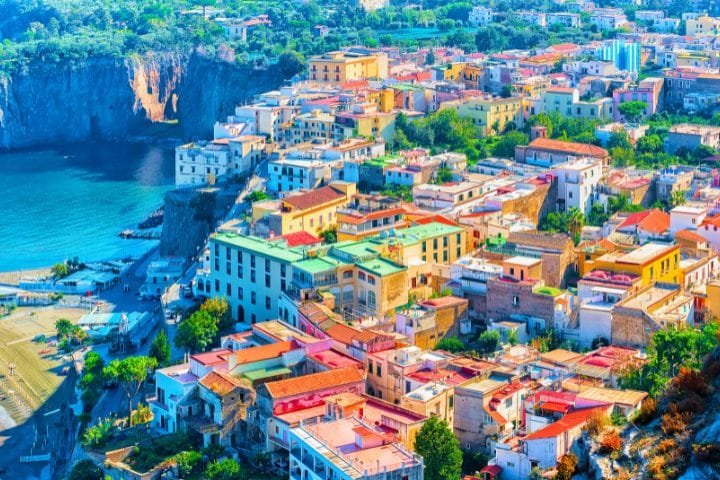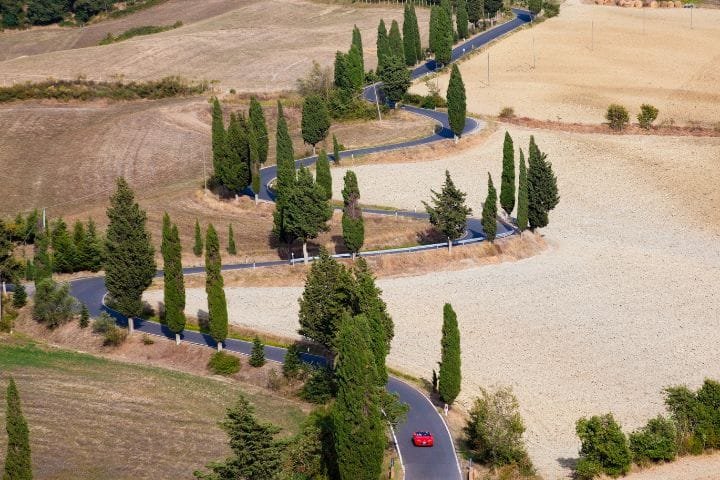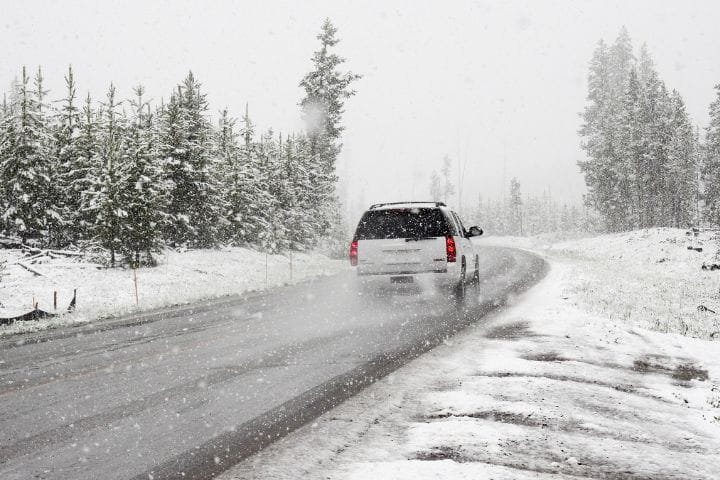Speed Limits in Italy for Tourists: Avoid Fines and Drive Safely in 2025

by Asia A. | Last Updated December 12, 2025
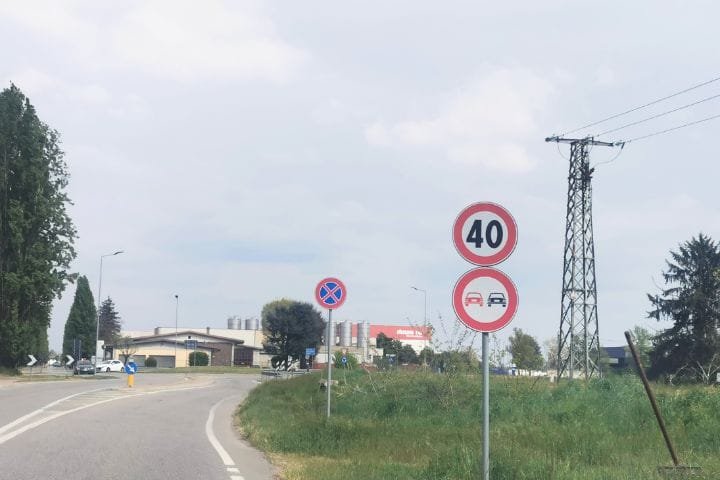
Ever wondered why Italian drivers seem to have a completely different relationship with speed limits than the rest of the world?
As someone who has been driving Italian roads for years and watching countless foreign friends receive surprise speeding fines weeks after their vacation, and honestly it breaks my heart because most of the time, they had no idea what they did wrong.
I can tell you that understanding Italian speed limits isn’t just about following the rules – it’s about understanding the culture.
Italy’s speed limit system might seem straightforward on paper, but there are hidden complexities that can cost unwary tourists hundreds of euros in fines. Did you know that speed limits in Italy change based on weather conditions, time of day, and even your driving experience level?
From the high-speed autostrade (highways)where everyone cruises at 150 km/h to those deceptively strict 30 km/h zones in historic city centers, Italian speed enforcement is more sophisticated (and more profitable) than most visitors realize.
Whether you’re planning a romantic drive through the Amalfi Coast or navigating the chaos of Rome, understanding these speed rules will save you money, stress, and potentially your safety.
Let’s decode the speed limits in Italy’s maze so you can enjoy our beautiful country without getting any nasty surprises in the mail.
Understanding the Basic Speed Limits in Italy: The Official Rules
Let me start with the basics that every tourist should know. In urban areas, the standard speed limit is 50 km/h – that’s about 31 mph for our American friends. This applies to any built-up area with streetlights and buildings, which includes pretty much every city and town center you’ll visit.
On rural roads and secondary highways, you can go up to 90 km/h (about 56 mph). These are the scenic routes through Tuscany or along the coast where you’ll want to take your time anyway for the views. Trust me, rushing through Chianti country at 90 km/h means you’ll miss all the good stuff.
Here’s where it gets interesting – dual carriageways (strade extraurbane principali) allow a speed of 110 km/h, and our famous autostrade (highways) have a 130 km/h limit. But honestly? Everyone goes faster on the autostrada (highway), and the police know it. More on that cultural quirk later.
What tourists don’t realize is that these are maximum limits under ideal conditions. Rain, fog, or being a new driver can drop these limits significantly. My cousin from Germany learned this the expensive way during his first visit – got clocked doing 85 km/h in what had become a 70 km/h zone due to rain.
Italy’s Standard Speed Limits Explained
Know the default limits for highways, rural roads, and city driving.
- Start with Italy’s full driving laws, etiquette & essential rules → Driving in Italy: Complete Guide
- Learn exactly how signs indicate speed limits across Italy → Italian Road Signs Explained
Autostrada (Highway) Speed Limits: What You Need to Know

The autostrada (highway) system is where things get really Italian, if you know what I mean. Officially, the limit is 130 km/h, but you’ll see locals cruising at 140-150 km/h in the left lane. The police generally tolerate this… until they don’t.
Here’s the thing about highway enforcement – it’s not the obvious speed traps you need to worry about. It’s those “Tutor” average speed cameras that measure your time between two points. These systems cover huge stretches of highway, sometimes 10-15 kilometers. You can slow down for the cameras all you want, but if your average speed is too high, you’re getting a ticket.
There’s also a minimum speed of 60 km/h on highways, which sounds ridiculous until you’re stuck behind some tourist doing 40 km/h in their tiny rental car, terrified of Italian traffic. Don’t be that person – if you’re not comfortable with highway speeds, stick to the secondary roads.
Lane discipline is crucial on highways. The right lane is for trucks and slower traffic, the middle lane for normal cruising (130-140 km/h), and the left lane for passing only. Italians will tailgate you aggressively if you’re blocking the left lane, and honestly, they have a point.
Plan Your Trip with Our Favorite Booking Tools
City and Urban Speed Limits: Historic Centers and ZTL Zones
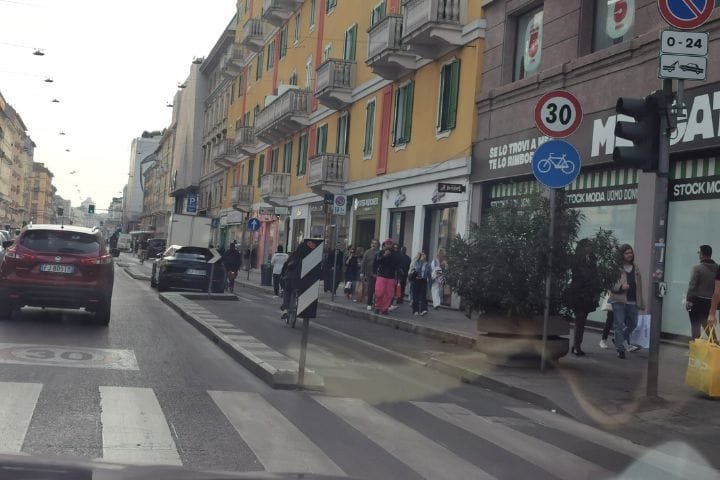
City driving is where tourists really get caught off guard. That 50 km/h urban limit drops to 30 km/h in many historic centers, especially around pedestrian areas and ZTL zones. These aren’t suggestions – the enforcement cameras in places like Florence and Rome are incredibly sensitive.
I remember helping my friend from London navigate Rome Centro, and she kept asking why everyone was driving so slowly. “Because,” I told her, “one speeding ticket here costs more than a nice dinner for four.” Those 30 km/h zones around the Colosseum or Ponte Vecchio are strictly enforced because they’re packed with tourists on foot.
School zones are another trap. During school hours (usually 7:30-8:30 AM and 1:00-2:00 PM), speed limits can drop to 30 km/h even on roads that are normally 50 km/h. The signs aren’t always obvious, and the cameras don’t care if you’re a confused tourist.
Peak hour restrictions are common in major cities, too. Milan has variable speed limits that change based on traffic and air quality. What’s 50 km/h at midnight might be 30 km/h at 8 AM on a Tuesday. Welcome to modern Italian traffic management!
🚦 Urban Speed Limits & Restricted Areas
Historic centers have the strictest limits — often as low as 30 km/h.
- Understand ZTL zone rules, timing, and camera enforcement → Italy ZTL Zones Guide
- Learn how to avoid entering restricted zones accidentally → How to Avoid ZTL Zones in Italy
Weather-Related Speed Restrictions: Rain, Fog, and Snow
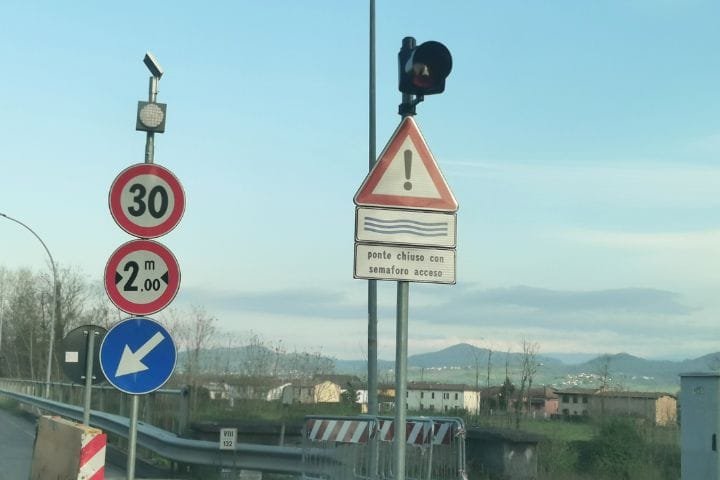
This is where Italian speed limits get really tricky, and where most tourists mess up. When it’s raining, speed limits automatically drop by 20 km/h on highways and 10 km/h on other roads. So that 130 km/h autostrada becomes 110 km/h the moment it starts drizzling.
Fog is serious business here, especially in northern Italy around the Po Valley. I’ve driven in fog so thick you literally can’t see the car in front of you. When visibility drops below 50 meters, the speed limit becomes 50 km/h everywhere, even on the highway. Ignore this and you’re risking both a massive fine and your life.
Snow and ice bring their own complications. From November 15 to April 15, you need winter tires or snow chains on many mountain roads. Speed limits drop significantly, and there are additional restrictions for different vehicle types. My brother got caught in a surprise snowstorm near Bolzano without proper equipment – the fine was €300 plus the cost of buying chains on the spot.
The weather enforcement is largely automated now. Modern cameras can detect road conditions and adjust speed limits in real-time. Those electronic signs over the highway aren’t just suggestions – they’re legally binding speed limits that change based on current conditions.
🌧️ Weather Changes the Limits
Italy automatically reduces speed limits during heavy weather.
- Learn essential safety tips for winter mountain routes → Winter Driving Tips for Italy
- If you’re driving Alpine passes in bad conditions → How to Drive Italian Mountain Passes in Winter
Speed Cameras and Enforcement: Where They Hide
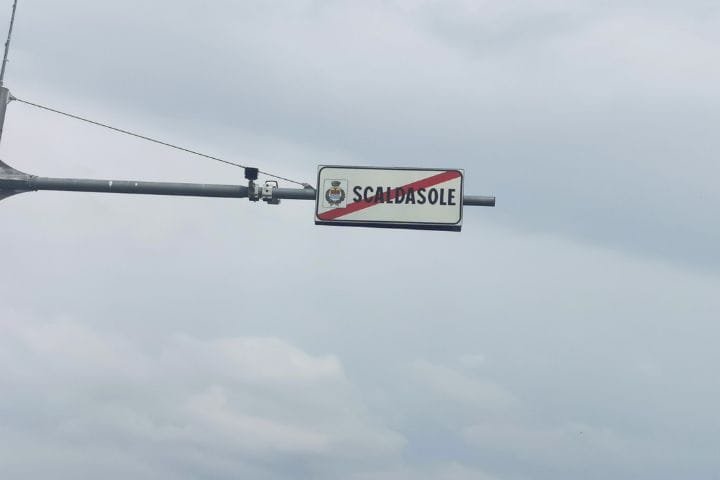
Let me give you the inside scoop on Italian speed enforcement, because it’s way more sophisticated than most tourists realize. We’ve got fixed cameras, mobile units, average speed systems, and plain-clothes police cars that look like regular vehicles.
The fixed cameras are usually obvious – big yellow or gray boxes that you can spot from far away. But here’s the trick: they’re often paired with Tutor average speed systems that monitor your progress over long distances. You can’t just slow down for the camera and speed up again.
Mobile enforcement is where things get sneaky. Polizia Stradale (traffic police) uses unmarked cars with radar guns, often positioned on highway overpasses or hidden in rest areas. They particularly target tourist routes during the summer months. I’ve seen them set up speed traps on the Amalfi Coast road where the limit drops from 90 to 50 km/h with very little warning.
The average speed cameras (Sistema Tutor) are the real game-changers. They track your license plate and calculate your average speed over sections that can be 20+ kilometers long. These cover most major highway routes now, and they’re incredibly accurate. There’s no beating them by slowing down for cameras – your only option is to maintain legal speeds for the entire monitored section.
Speed Limit Fines and Penalties: What It Costs
Here’s where things get expensive fast. Italian speeding fines start at around €42 for minor violations (up to 10 km/h over the limit) but can reach €3,382 for extreme speeding. Plus, if you’re going more than 40 km/h over the limit, they can suspend your license on the spot.
For tourists, the process is different because you’re usually gone by the time the fine is processed. The rental car company will charge your credit card for the violation, plus administrative fees (usually €25-50 per ticket). Then the actual fine gets mailed to your home address weeks or months later.
Here’s something most tourists don’t know: fines increase based on when they’re paid. Pay within 5 days and you get a 30% discount. Wait longer than 60 days, and the fine doubles. Some tourists ignore these, thinking Italian authorities can’t collect from abroad – a big mistake. They absolutely can and will pursue international collections.
The amounts get serious quickly. Going 20 km/h over the limit costs €175-694, depending on the road type and circumstances. Going 40+ km/h over the speed limit can cost up to €3,382 plus license suspension. I’ve seen tourists get hit with multiple violations from one road trip that totaled over €1,000.
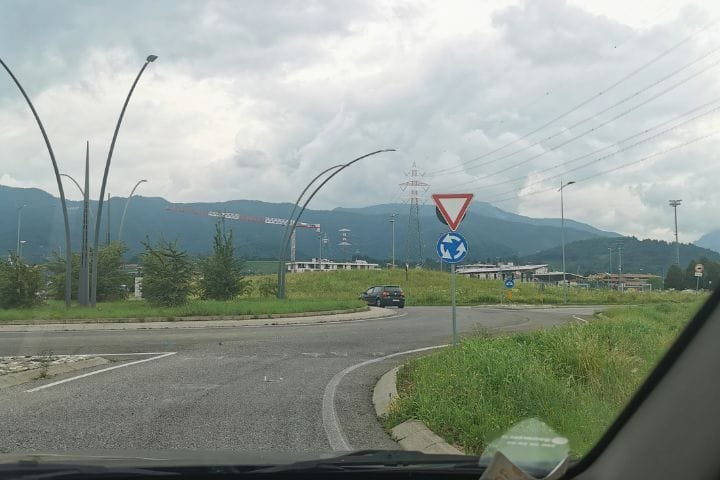
Special Speed Zones: Construction, Schools, and Tunnels
Construction zones are everywhere in Italy – we’re constantly improving our infrastructure. Speed limits in these areas drop significantly, often to 60 km/h on autostradas and 30 km/h in cities. The enforcement is strict because worker safety is taken seriously.
School zones have specific timing restrictions that many tourists miss. The 30 km/h limits usually apply during school entry and exit times, not all day. But the signs aren’t always clear about timing, and enforcement cameras don’t distinguish between confused tourists and local drivers who should know better.
Tunnels have their own rules, especially the long ones through the Alps. Many have variable speed limits based on traffic density and air quality. The Mont Blanc tunnel, for example, has sophisticated monitoring that adjusts speeds in real-time. These aren’t suggestions – tunnel violations carry heavy penalties because safety risks are so high.
Motorcycle and truck restrictions add another layer of complexity. Motorcycles under 150cc aren’t allowed on autostradas at all. Trucks have lower speed limits and additional restrictions during peak hours and summer weekends. If you’re driving a larger rental vehicle, make sure you understand all specific rules that apply.
Tips for Driving Safely Within Speed Limits
After two decades of driving here, my best advice is to use GPS with speed monitoring. Modern navigation systems show current speed limits and warn you about cameras and speed zones. Google Maps and Waze are pretty good about this in Italy, though they’re not always perfect with temporary restrictions.
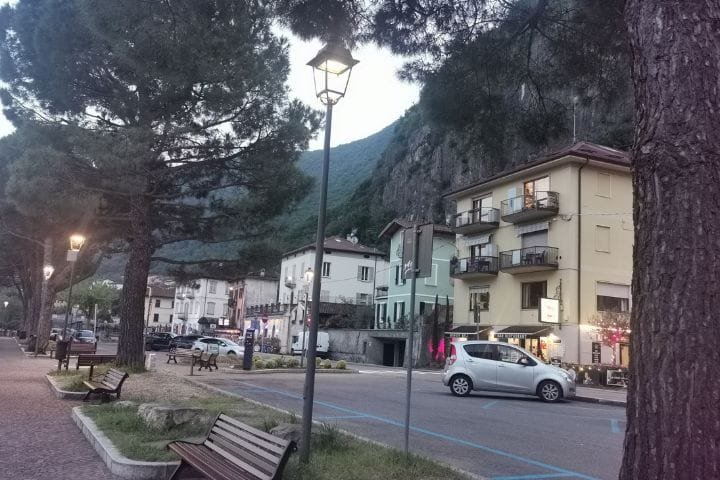
Understanding Italian driving culture helps, too. Yes, locals often speed on the autostrada, but they’re also incredibly good at slowing down when it matters. Follow the flow of traffic rather than rigidly sticking to posted limits, but always err on the side of caution in cities and special zones.
Defensive driving is crucial here. Italian drivers are skilled but aggressive, and they expect you to keep up. If you’re uncomfortable with the pace, use the right lane and let faster traffic pass. Don’t try to “teach” speeding drivers a lesson by blocking them – that just creates dangerous situations.
Most importantly, always leave extra time for your journeys. Rushing leads to speeding, which leads to expensive fines and potential accidents. Italy is beautiful – enjoy the journey instead of racing to the destination.
🧠 Practical Advice for Defensive Driving
How to stay safe even when other drivers bend the rules.
- Use GPS apps that show dynamic speed limits → Best Navigation Apps for Italy
- Learn what to expect during seasonal travel
→ Driving During Summer Heatwave
→ Winter Driving Guide
Plan Your Trip with Our Favorite Booking Tools
Navigating Italian Roads Like a Local
Look, speed limits in Italy aren’t just about following rules – they’re about understanding a culture that values both freedom and responsibility. We drive fast when it’s safe, slow down when it matters, and accept that enforcement is part of the system.
My advice after a lifetime of driving here? Respect the limits, especially in cities and special zones. Use technology to stay informed about current restrictions. And remember that those fines aren’t just revenue generation – they’re often protecting pedestrians, workers, or other drivers in areas where speed really does kill.
The key is staying alert and adapting to conditions. Italian roads range from medieval city streets to modern highways, and the speed limits reflect those different environments. Master this system, and you’ll not only avoid fines but also discover why Italians are passionate about driving – when done right, it’s an art form.
Drive safely, respect our roads and communities, and enjoy the incredible freedom that comes with exploring Italy by car. Just remember to keep an eye on that speedometer – those cameras are watching, and Italian efficiency when it comes to issuing fines is definitely not a stereotype!
Buon Viaggio!
FAQs on Speed Limits in Italy
What are the basic speed limits in Italy?
The standard speed limits are 50 km/h in cities, 90 km/h on rural roads, 110 km/h on dual carriageways, and 130 km/h on autostradas. However, these limits can change based on weather conditions, dropping by 20 km/h on highways and 10 km/h on other roads when it’s raining.
Historic city centers often have 30 km/h zones, especially around pedestrian areas and ZTL zones. School zones may have temporary 30 km/h limits during specific hours (usually 7:30-8:30 AM and 1:00-2:00 PM).
How much are speeding fines in Italy?
Speeding fines start at €42 for minor violations (up to 10 km/h over) but can reach €3,382 for extreme speeding. Going 20 km/h over costs €175-694, depending on location. You get a 30% discount if paid within 5 days, but fines double after 60 days.
Rental car companies charge your credit card plus €25-50 administrative fees. For tourists, multiple violations from one trip can easily total over €1,000, and Italian authorities can pursue international collections.
What are the speed limits on highways in Italy?
On highways (Autostrade), the standard speed limit is 130 km/h (81 mph). This drops to 110 km/h in bad weather conditions like rain or fog.
Are there speed cameras in Italy?
Absolutely. Italy uses fixed and mobile speed cameras extensively. Fines are often sent internationally, even to rental car drivers.
Where are speed cameras located in Italy?
Italy uses fixed cameras (obvious yellow/gray boxes), mobile radar units, and sophisticated “Tutor” average speed systems that monitor 10-20km highway sections. Mobile enforcement targets tourist routes, especially the Amalfi Coast and Tuscany.
Average speed cameras cover most major autostradas and calculate your speed between checkpoints – you can’t beat them by slowing down for cameras. Enforcement is particularly strict in historic centers, school zones, and construction areas.
Do speed limits change in bad weather?
Yes, speed limits automatically reduce when it rains: 20 km/h lower on autostradas (130 becomes 110) and 10 km/h lower on other roads. In fog with visibility under 50 meters, the limit becomes 50 km/h everywhere, even on highways.
Snow and ice bring additional restrictions, and winter tires or chains are required from November 15 to April 15 on mountain roads. Modern cameras detect weather conditions and adjust limits in real-time, making these legally binding.
What’s the real driving culture around speed limits?
Locals often cruise at 140-150 km/h on autostradas despite the 130 km/h limit, and police generally tolerate this. However, enforcement is strict in cities (especially 30 km/h historic zones), school areas, and construction zones.
The key is following traffic flow on highways while respecting limits in populated areas. Use GPS with speed monitoring, stay in the right lane if uncomfortable with the pace, and always slow down in cities – that’s where tourists get caught and fined heavily.
Do new drivers have different speed limits in Italy?
Yes, if you’ve had your license for less than three years, your maximum speed limit on highways is 100 km/h (62 mph).
💬 We’d love to hear from you!
Have questions, tips, or personal travel stories to share? Drop them in the comments below — your insights help fellow travelers plan their adventures too.


